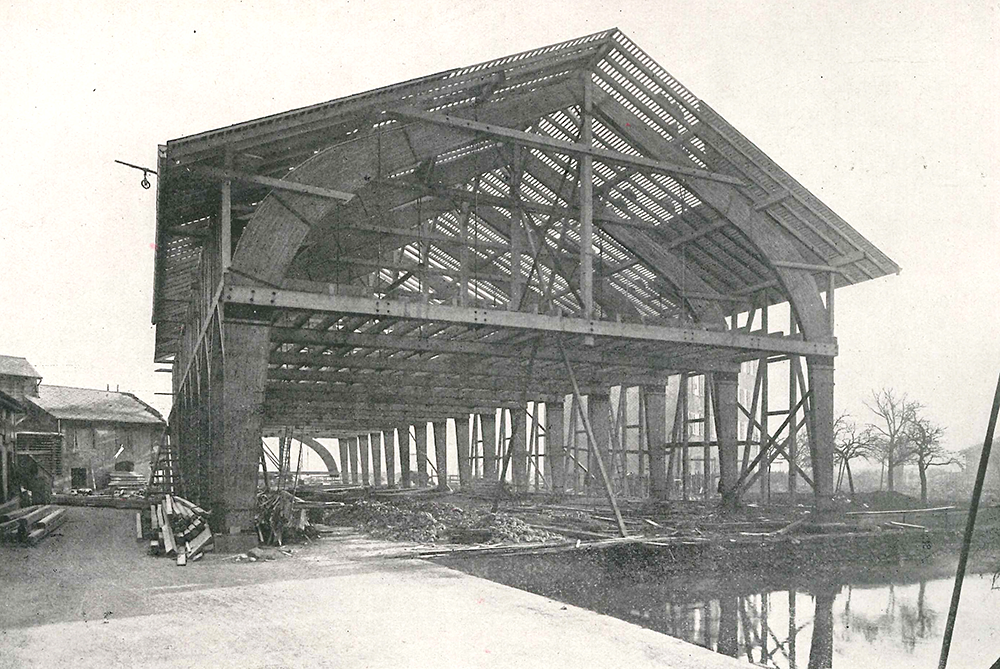Terner & Chopard and the new timber – a historical inquiry into the early application of laminated timber in Switzerland
2018 -
Terner & Chopard was one of the most important Swiss engineering firms in the 20th century. They have been responsible for the first modern
timber structures in Switzerland based on the new technology of industrially fabricated timber using thin planks put on top of each other
specifically curved if desired and glued together. Swiss engineers Bernhard Terner (1875-1960) and Charles Chopard (1879-1954) acquired the
patent for this technology and the exclusive right in Switzerland. During the following 24 years they developed many extraordinary timber
structures, which also have been acknowledged internationally and belong to the most distinguished architectural examples in timber
construction of that time.
The proposed research project will provide a survey of early glue-laminated timber structures developed by Terner & Chopard and clarify
their role in the national and international context. It will clarify conceptual influences from other building materials both visible in
the design process of these structures and the development of the first timber regulations. Architectural, cultural and detailed
constructional aspects will be consider using historiographical methods to explain why glue laminated timber was used (and shaped) that
particular way, i.e. why and how different details and component shapes have been developed and why details were so different from
traditional timber construction.
This research will provide a profound understanding of the first glue laminated buildings and regulations and allows a better understanding
of the implicit construction philosophy we use today. This will be especially helpful when the restoration of such structures is discussed
today. The study will provide a clear localization of the origins and the nature of Swiss glued laminated timber.
SNSF-Research Project:
Dr. Mario Rinke
Research Team:
Dr. Mario Rinke (Research Coordination), Prof. Joseph Schwartz, Roshanak Haddadi
Project Partner:
Prof. Frangi Andrea, Yeomans David
last modified 4.2.2020
